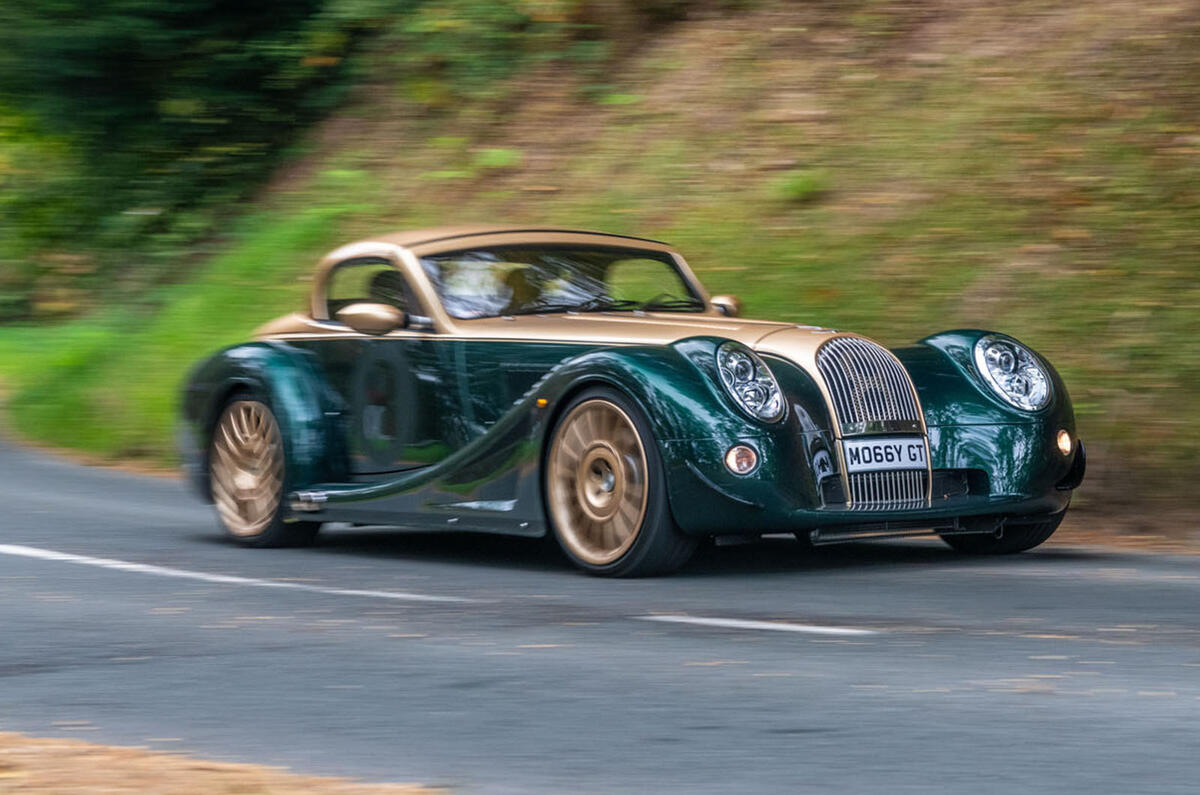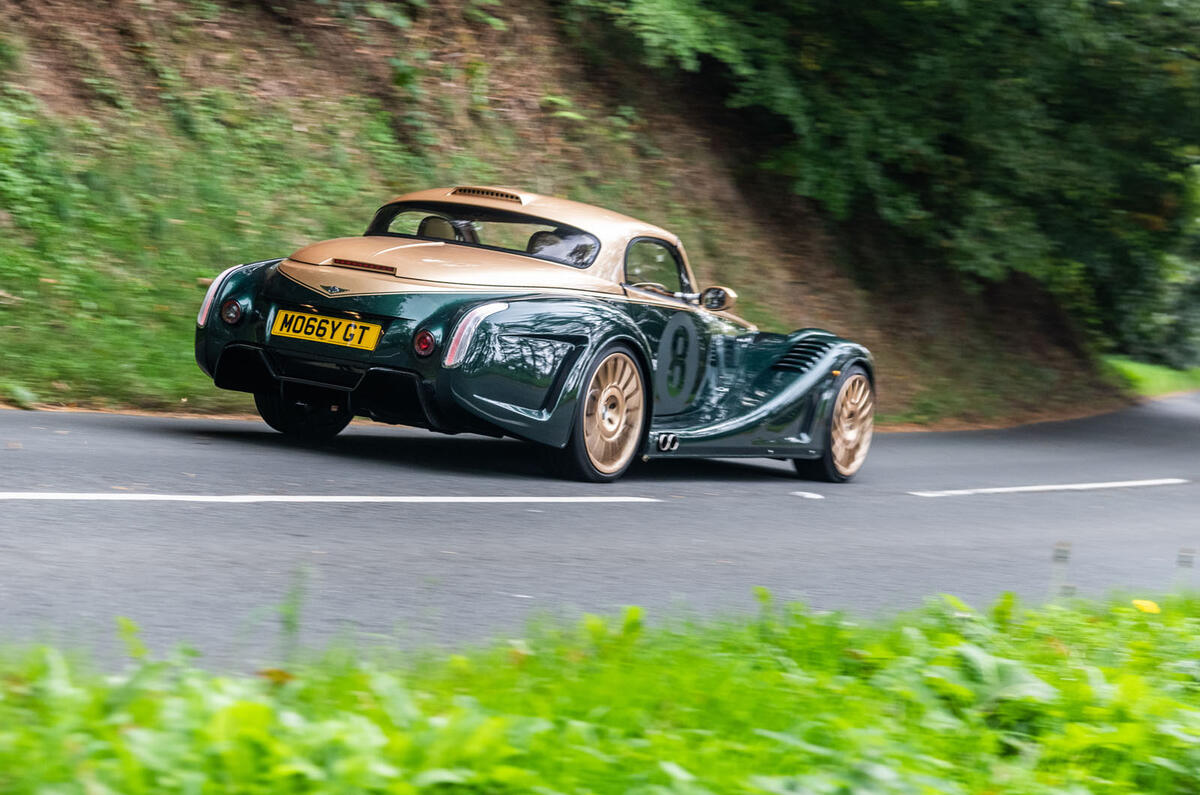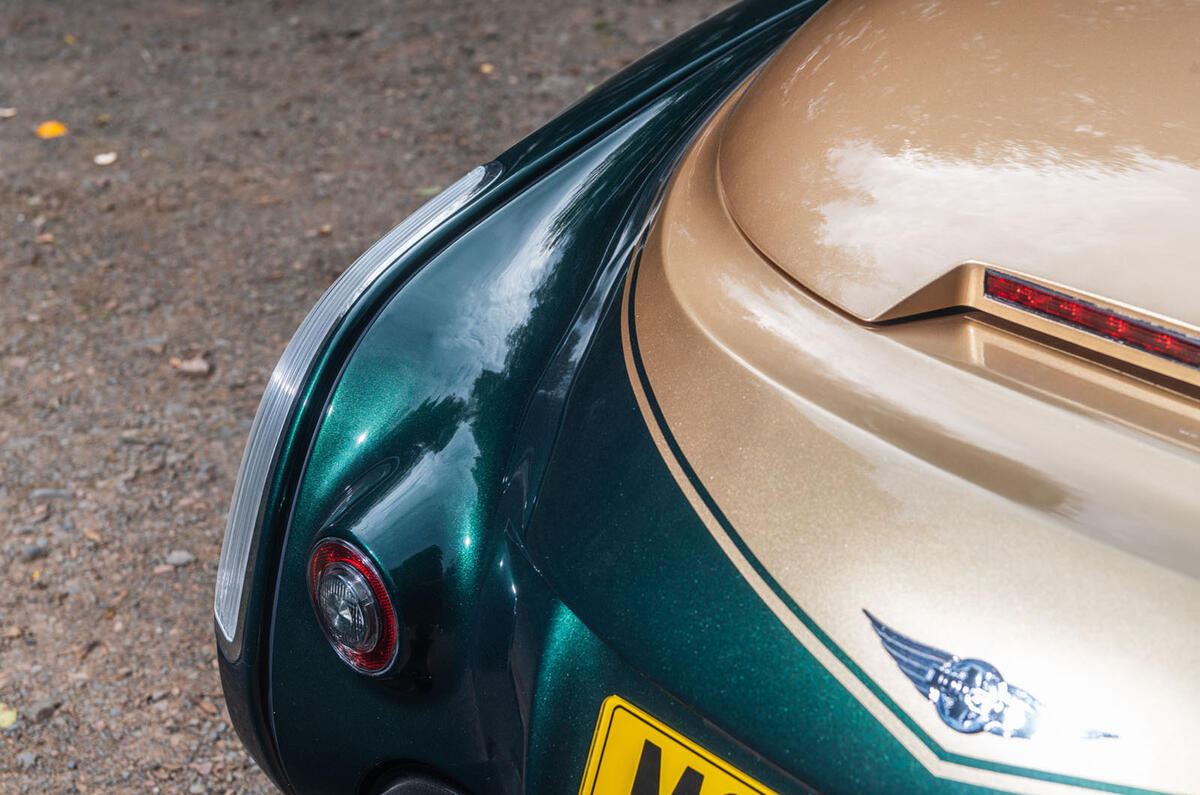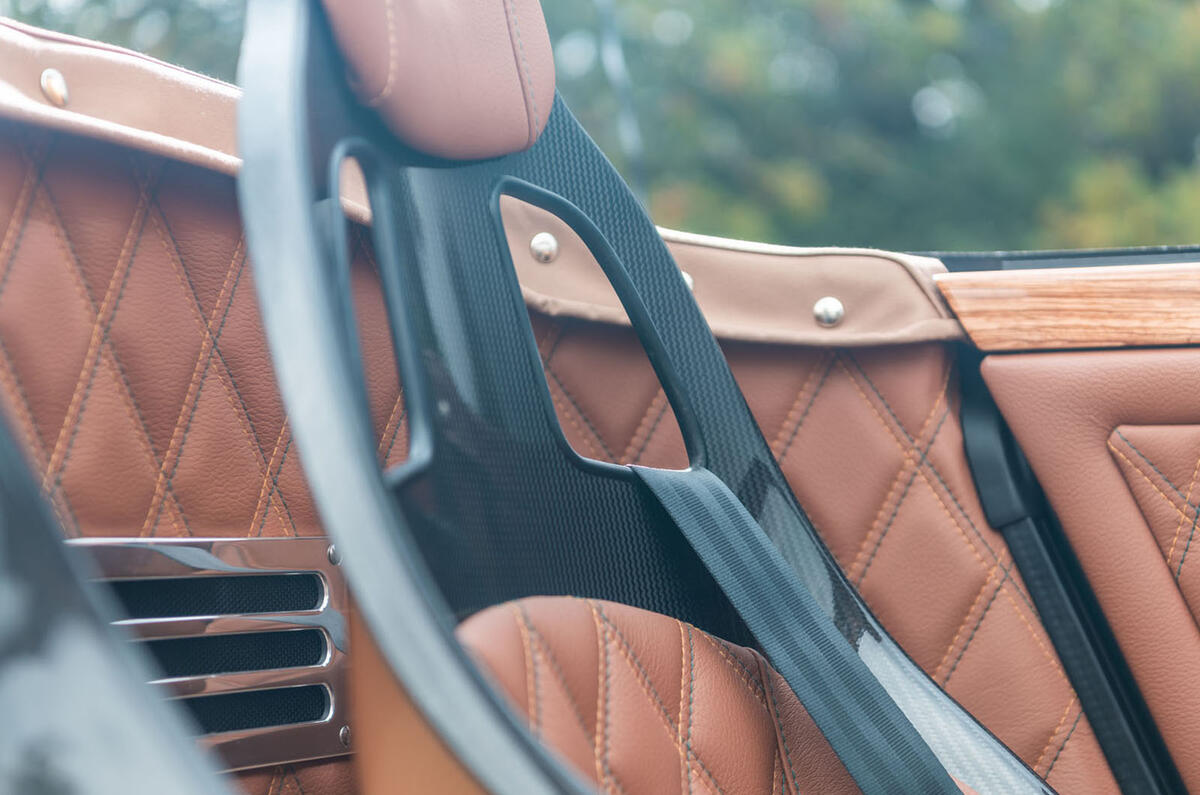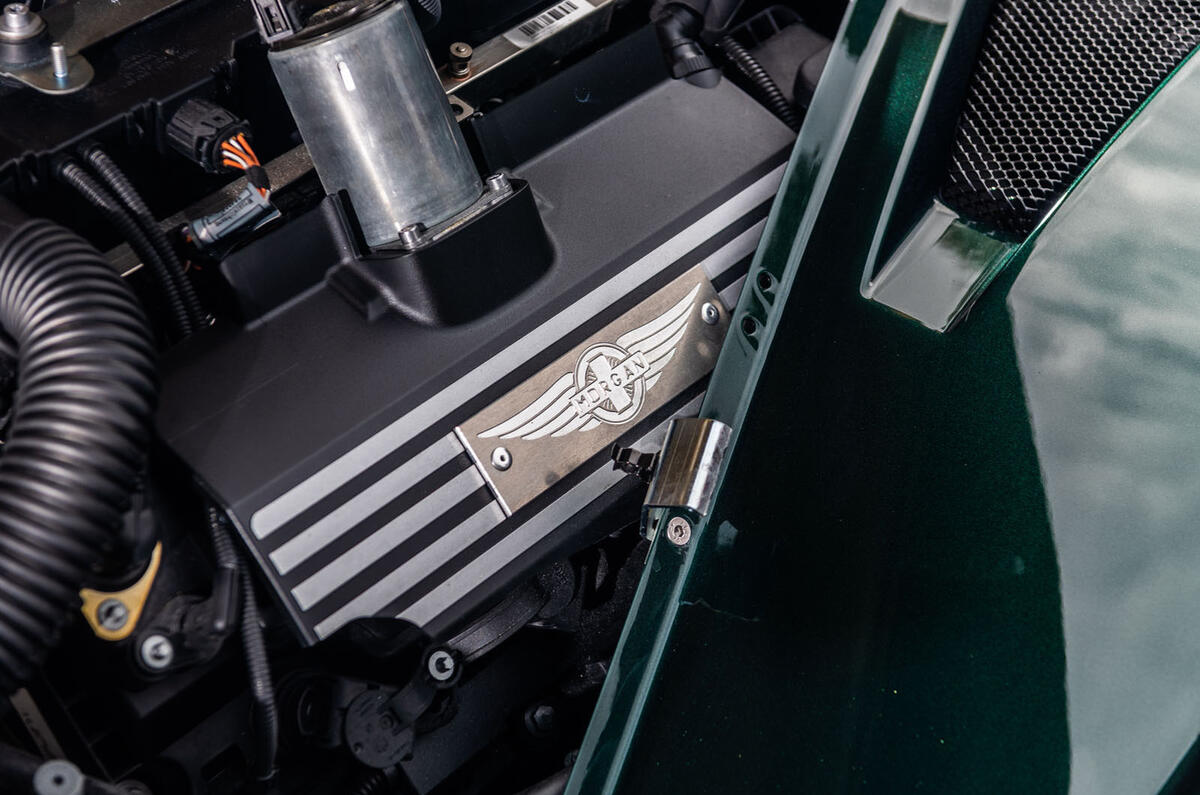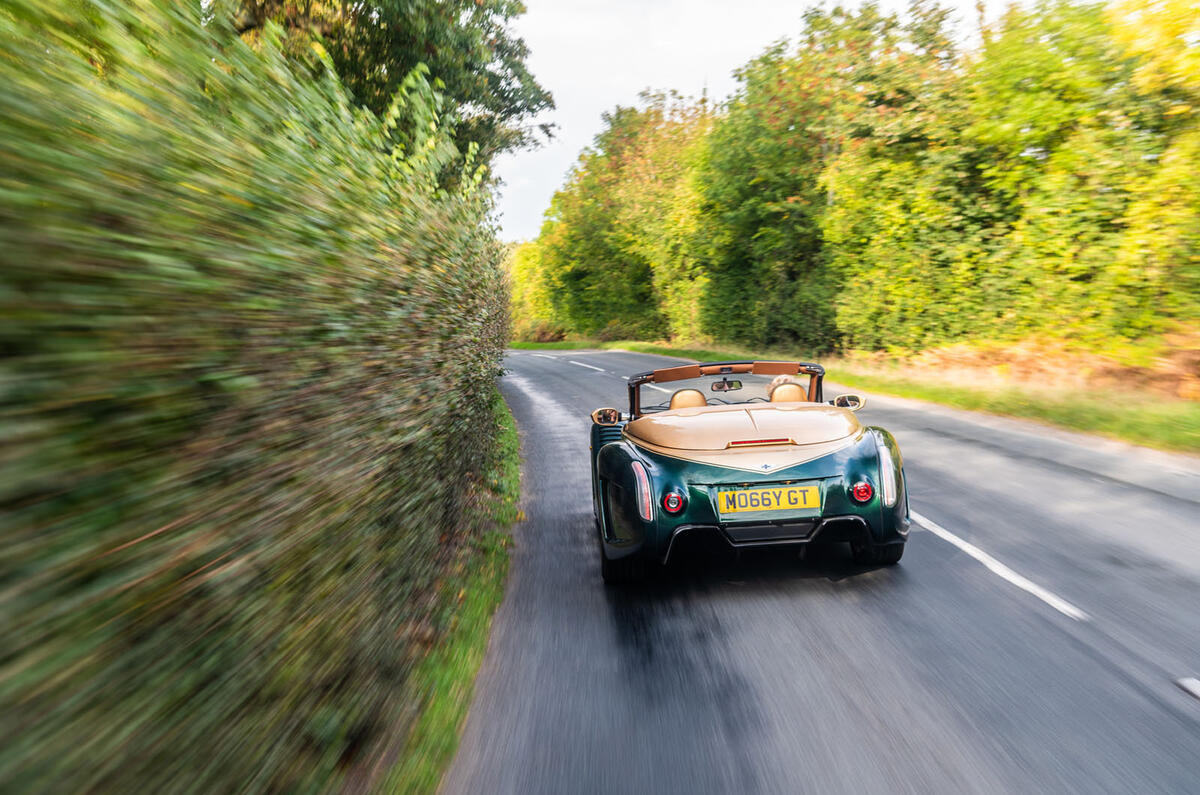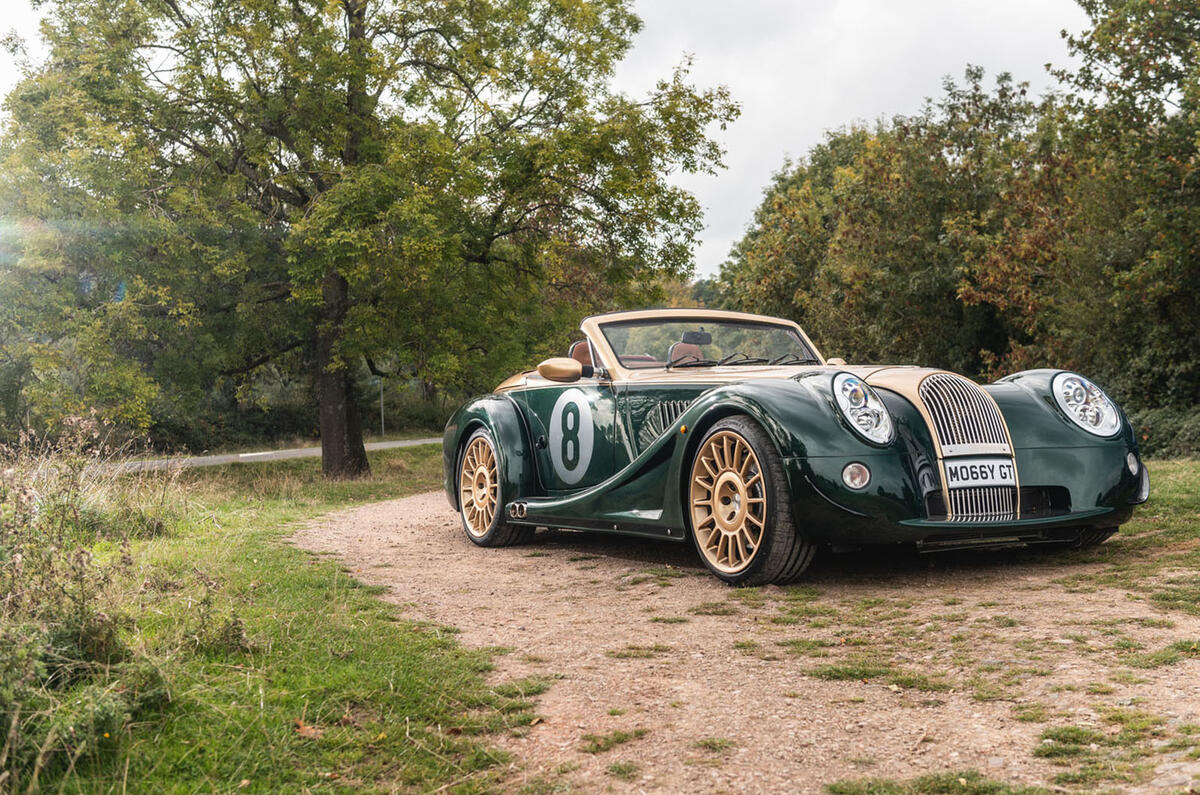At any speed, in any gear, a Morgan Aero doesn’t so much rouse the deceased as haul them out of the ground by their metatarsals. Presumably the good people of Malvern are now accustomed to this kind of ruckus.
Morgan has been hand-building cars in this corner of Worcestershire since 1909, and using a BMW-supplied V8 for its most serious models since the supply from Rover began to dry up around the millennium. It really is devastatingly loud in this application, firing pavement-bound pulses from a pair of side-exhausts and with enough torque to turn fourth gear while trundling along only a whisker quicker than walking pace. You can open the throttle early and wide for a locomotive chug-chug-chug that’s just so addictive.
And yet this, for all intents and purposes, is the last time those residents will get to enjoy (or decry) such a sound, at least from a freshly constructed car. This year the deal with BMW ends, and though Jaguar’s name has been mentioned, a new supply line of big, juicy engines is yet to be established.
Truth be told, it may never materialise, usurped by a V6, and along with the fact no successor for the flagship Aero 8 is planned, that makes the Morgan you see before you rather special.
It’s called the Aero ‘GT’, this one being number eight of a run of only eight ‘gloves off’ cars, as Morgan puts it. Each costs £144,000 but the sky is limit as goes customisation, with the handful of owners individually invited to the Malvern Link works to meet chief designer Jon Wells and create something unique.


